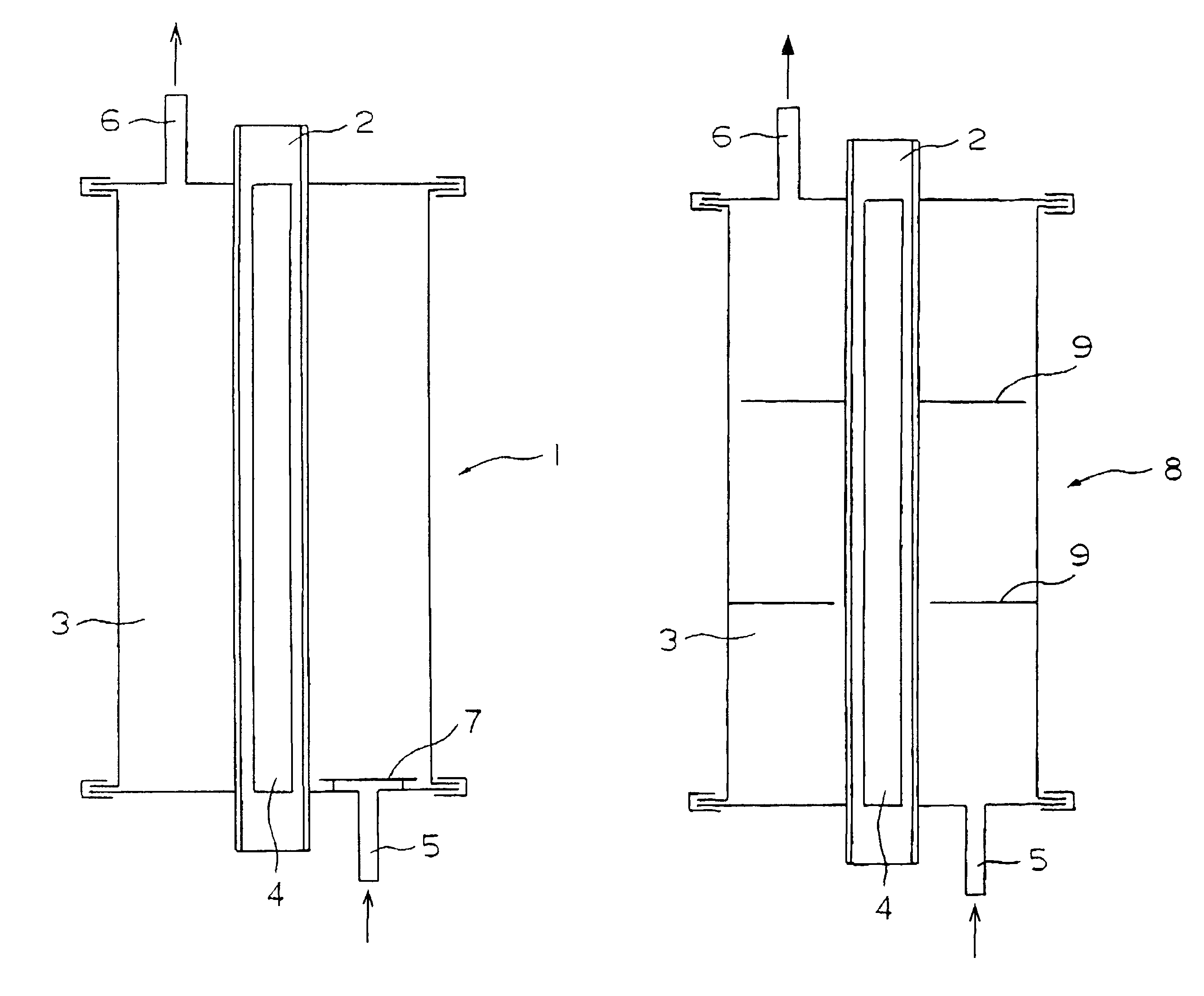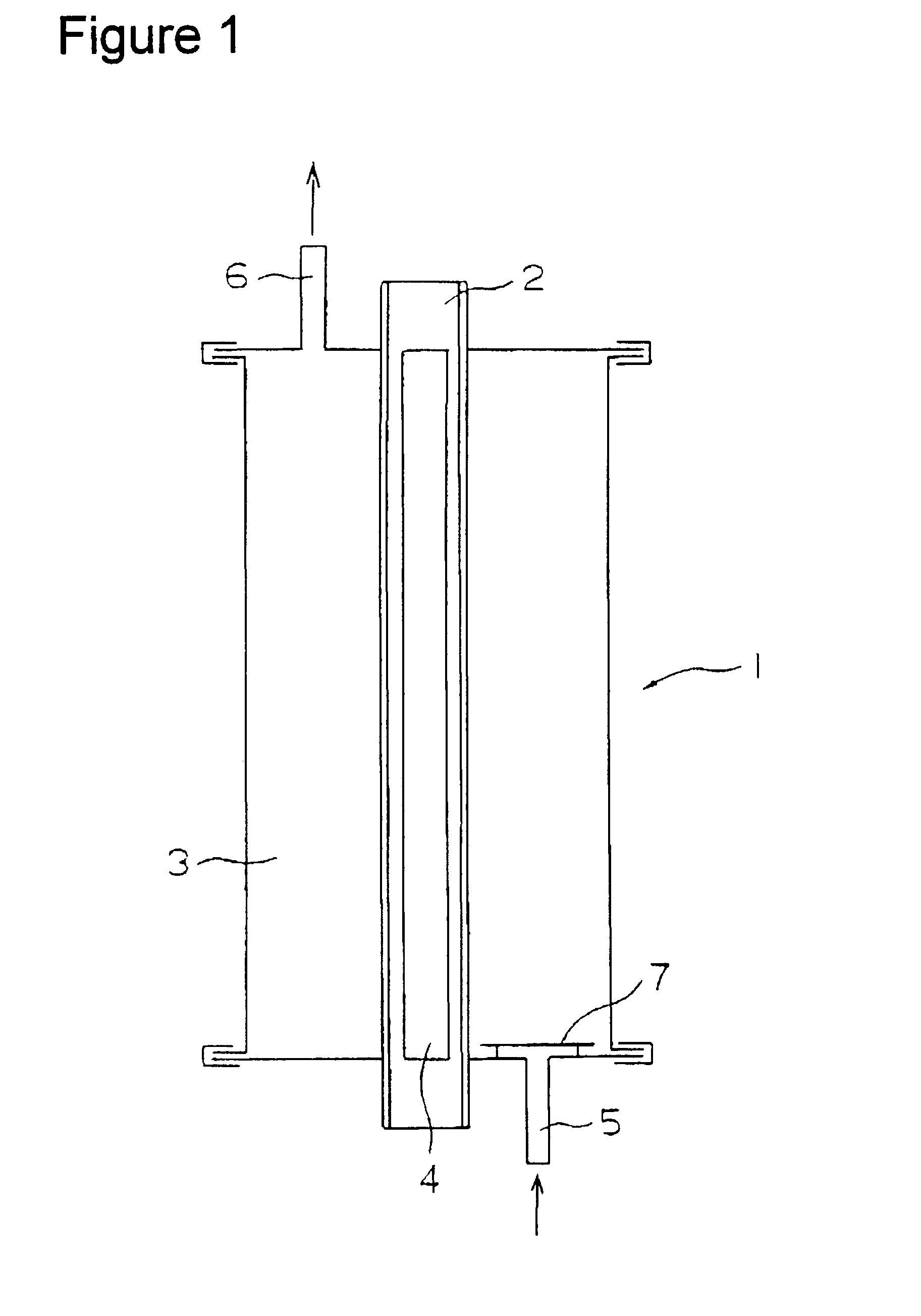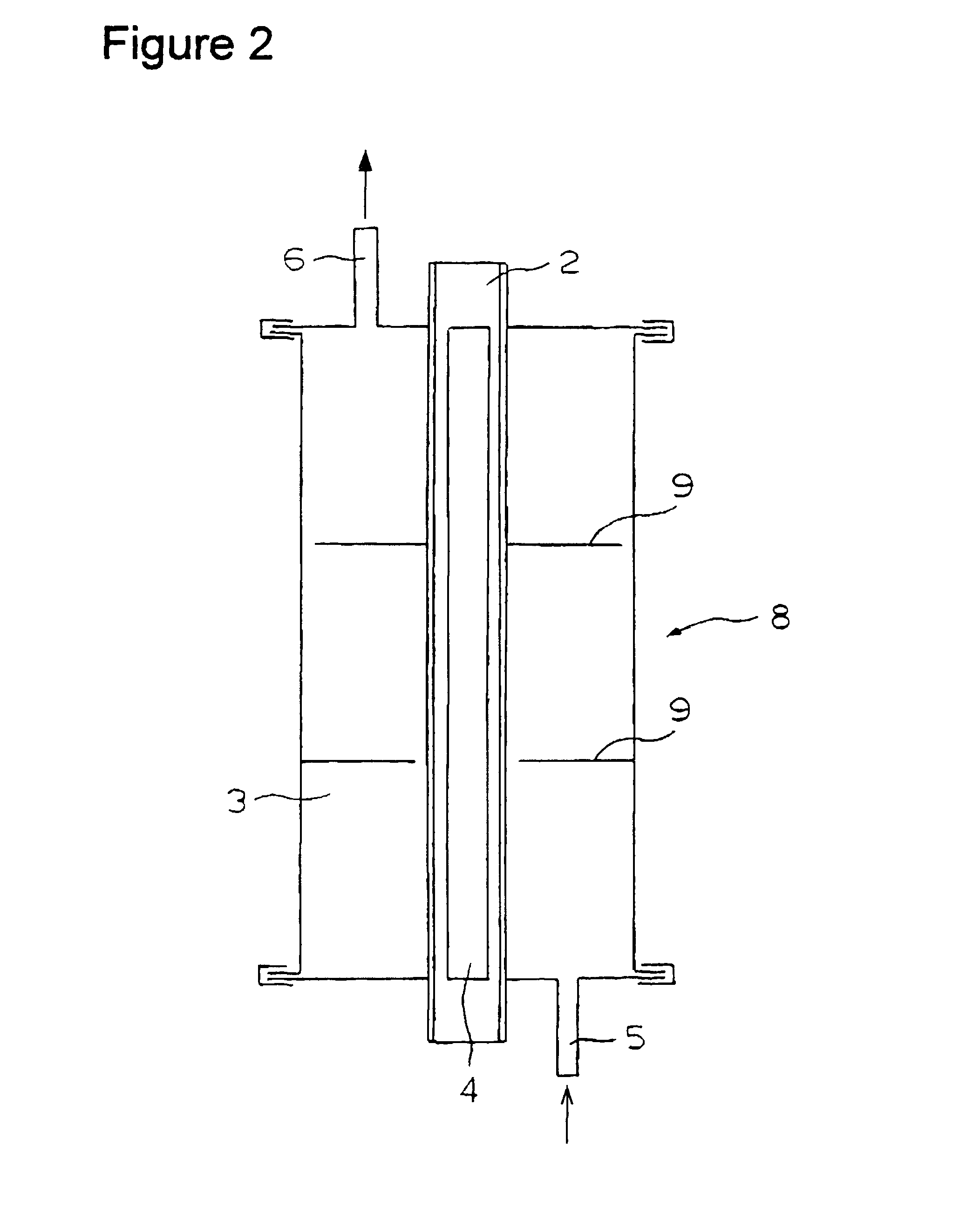Photolytic device for breakdown of organic chlorine compounds
a technology of organic chlorine and photolysis device, which is applied in the direction of energy-based chemical/physical/physicochemical processes, separation processes, and processes involving chemical/physical/physical-chemical processes, can solve the problems of existing environmental pollution by organic chlorine compounds, and the problem of large pollution of ground water and soils by organic chlorine compounds has not been solved, so as to achieve the effect of efficient break down of gas containing organic chlorine compounds
- Summary
- Abstract
- Description
- Claims
- Application Information
AI Technical Summary
Benefits of technology
Problems solved by technology
Method used
Image
Examples
embodiment 2
Perfect mixing reaction container 1 was used as first reaction container, and a six-part separation reaction container 8 was used as second reaction container. All other operations were repeated as in Embodiment 1.
When the reaction reached a steady state, the trichloroethylene concentration at the entry of the first reaction container was 511 ppm. At the exit of the second reaction container, the trichloroethylene concentration was 1 ppm. The breakdown rate of trichloroethylene was therefore 99.8%.
PUM
| Property | Measurement | Unit |
|---|---|---|
| wavelength | aaaaa | aaaaa |
| particle diameter | aaaaa | aaaaa |
| average particle diameter | aaaaa | aaaaa |
Abstract
Description
Claims
Application Information
 Login to View More
Login to View More - R&D
- Intellectual Property
- Life Sciences
- Materials
- Tech Scout
- Unparalleled Data Quality
- Higher Quality Content
- 60% Fewer Hallucinations
Browse by: Latest US Patents, China's latest patents, Technical Efficacy Thesaurus, Application Domain, Technology Topic, Popular Technical Reports.
© 2025 PatSnap. All rights reserved.Legal|Privacy policy|Modern Slavery Act Transparency Statement|Sitemap|About US| Contact US: help@patsnap.com



